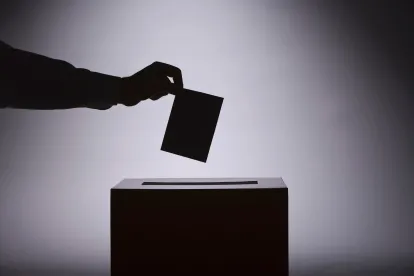June is primary election month in Utah. There are several interesting primary races taking place that will be decided on Tuesday, June 28. Most counties are using mail-in ballots, so many of you will be receiving your ballots soon. On the Republican side, the race between incumbent Governor Gary Herbert and challenger Jonathan Johnson has been heating up for weeks after the Governor’s second place finish at the Republican State Convention, and mudslinging on both sides about fundraising activities (those darn special interest groups and lobbyists!). Polling still shows Governor Herbert with a hefty lead. Democrats also have a statewide primary battle with Misty Snow and Jonathan Swinton vying to challenge the U.S. Senate incumbent Republican Mike Lee. This race features a unique element for Utah, as Snow would be the first statewide transgender candidate in our history if she wins.
At the legislative and county level, the new signature gathering law has generated more primaries than anyone can ever remember in the State of Utah. The firm is a member of the Utah Business Coalition, which conducts candidate interviews each election cycle. I serve as the Coalition’s Elections Chair, and organized interviews of 16 primary election candidates at the end of May. There are a handful of close races that are interesting tests of our new dual path to the primary ballot.
Below are highlights on three high profile legislative races, but I’m happy to provide insight into other races for anyone who is interested in or lives in an area with a primary race. Swing by my office on the 19th floor anytime you want to talk politics.
State Senate District 10: (Salt Lake County, South Jordan area)
This race pits incumbent Sen. Lincoln Fillmore against challenger Rep. Rich Cunningham. Fillmore filled a mid-term vacancy when former Sen. Aaron Osmond resigned to take on a new position with his current employer. He has been in office about 6 months. Cunningham has served in the State House since 2012. When the mid-term vacancy Republican delegate election was held Fillmore and Cunningham both ran for the seat and Fillmore came out on top with the most delegates. Fast forward a few months and the two are challenging each other again. Fillmore won 60% of the delegate vote at the Salt Lake County Republican Convention, which in previous years would have made him the party nominee. However, Cunningham gathered enough signatures to guarantee himself a spot on the primary ballot. Senate leadership is heavily supporting and fundraising for Fillmore.
Dividing Issues (real or imagined): Charter schools and public employee retirement.
-
Fillmore works for a charter school management company and has the backing of charter school supporters.
-
While he previously wasn’t seen as leaning one way or the other in the charter vs. traditional school debate, Cunningham is now seen as the traditional public school candidate.
-
Cunningham is a financial advisor and has proposed several bills to modify the so-called “double dipping” laws for retired public employees that want to return to work in a public sector job. The bills didn’t pass and were sent to interim study for further refinement.
-
Former State Senator, Dan Liljenquist, authored the public employment reform bill on double dipping a few years ago and the Senate sees Cunningham’s bills as a direct attack on a well-liked and respected former colleague.
Kate’s Bet: Advantage Fillmore as the incumbent, but this one will be close. Cunningham is throwing lots of personal wealth into the race, but the assistance of Senate Leadership in fundraising might push Fillmore over the top.
State Senate District 14: (Utah County, Highland/American Fork area)
The seat in this district is open as current State Senator Al Jackson is retiring at the end of his term to follow his son, Frank Jackson, to Duke University on a basketball scholarship. The challengers are Morgan Philpot and Dan Hemmert. Philpot previously served in the State House during the early 2000’s before leaving to attend law school. Since Philpot’s return to Utah, he has unsuccessfully run for the 2nd Congressional District and Governor. Hemmert is a newcomer to politics. He is also an attorney, but doesn’t currently practice, and is the owner of Red Hanger dry cleaners. Neither candidate managed to attain the 60% delegate threshold at the Utah County Republican Convention and will face each other in a primary.
Dividing issues (real or imagined):
-
Philpot is a libertarian/strict constructionist and is seen as the farther right candidate (although keep in mind this is a Utah County race so neither candidate could ever be accused of being a RINO).
-
Philpot supported the voucher movement and would like to see that issue brought back along with an overall reform of public education.
-
Hemmert sees himself as a “numbers guy” and believes we should scour the state budget for waste.
-
Hemmert is a supporter of public education and would like to give districts more control over how funds are spent.
Kate’s Bet: Hemmert. He has the better-organized and funded campaign. His platform also appeals to a broader scope of the Republican electorate while Philpot’s strength is with the delegates.
State House District 6: (Utah County, Lehi area)
This is also an open seat as current Rep. Jake Anderegg has vacated the seat to run for the open State Senate seat in the same area. The challengers are Cory Maloy and Mike Brenny. This race is particularly interesting because Brenny chose only to gather signatures and did not attend the Utah County Republican Convention. The Utah County Republican Party is taking this affront to party power seriously and is taking unusual steps to back Maloy.
In contrast, Cory Maloy did attend the convention against a third challenger (John Morris) and won the majority of votes. He didn’t reach the 60% delegate threshold, but the other challenger dropped out after the convention, leaving Maloy to face Brenny.
Both candidates list transportation issues at the “Point of the Mountain” and overcrowded schools at the primary issues they would like to address as a legislator. Maloy is the Vice President at Snapp Conner, a local PR firm, and Brenny is a realtor and mortgage broker. Both are new to politics and previously haven’t held office.
Dividing issues (real or imagined):
-
Brenny lives on the Traverse Ridge side of Lehi and feels strongly that the representative should come from that booming area versus other parts of Lehi.
-
Brenny is a transplant to Utah, and until recently was a registered Democrat. He is not of the predominate faith (remember this is a Utah County race), but he does have the backing of the powerful Utah Association of Realtors PAC.
-
Maloy wants all proposed tax increases to go to a vote of the people.
Kate’s Bet: Too close to call. This race will come down to voter turnout. Utah County is one of the few counties not using mail-in ballots this year. This could translate into a very low voter turnout and the win will go to the candidate with the best GOTV strategy.



 />i
/>i

